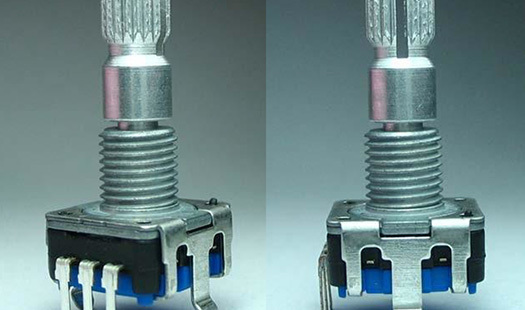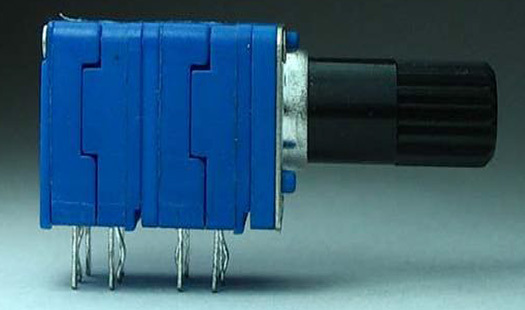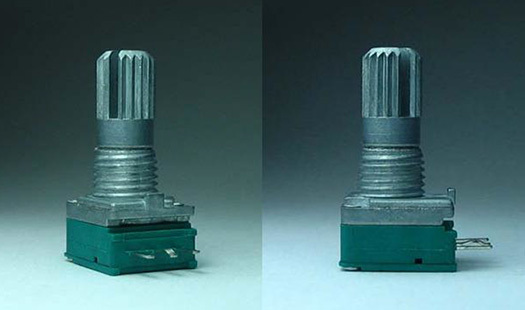How to select and connect potentiometers
Dec 07,2021
It is recommended that when choosing a resistor, you should pay attention to the size of the resistor, the length of the shaft and the style of the end cap, as well as whether the position on the shaft needs to be clamped with a switch, single control or multi-link, single turn or single bead. etc., for actual structural requirements. For those that require frequent adjustment, you should choose a knob with a flat surface milled into the bearing end cover for easy installation. For those who do not need to adjust it frequently, you can choose a bearing end cover with a groove that can be adjusted with a screwdriver to stop rotating, so as to maintain the relative reliability of the working attitude. I don’t know if you have any knowledge about the selection and wiring of resistors? I will lead you to learn more about them below!
1. The difference between 50K resistor and 100K resistor:
In fact, a 50K resistor means that its resistor is 50 kiloohms, while a 100K resistor means that its resistor is 100 kiloohms. Different power supply circuits have different regulations on the resistance of resistors. We need to calculate the resistance value of the resistor that meets the circuit principle specifications. If the resistor is used in the voltage dividing circuit of the switching power supply, both are possible, but at least the one with a larger resistance value will save more power. If a resistor is used to connect a video signal and the internal resistance of the video signal is relatively large, a resistor with a large resistance value should be used to reduce the energy consumption of the internal resistance.
2. Six-pin double resistor wiring:
As we all know, at present, 3-pin single resistors are generally used for multi-channel sound adjustment. The wiring is usually 1 pin for grounding, then 2 pins (that is, the middle pin) is connected to the output, and 3 pins are connected to the output terminal. Connect the output terminal. Then the 6-pin dual-connected resistor is generally used as a dual-channel memory volume adjustment application. In fact, the wiring principle is similar to that of a 3-pin single resistor. First, pins 1 and 4 of the six-pin dual resistor are soldered to some grounding devices at the same time, while pin 2 is connected to the left channel. For output, pin 3 is connected to the left channel input, pin 5 is connected to the right channel output, and pin 6 is connected to the right channel input, so everyone should clearly distinguish between the single-control and double-connected resistor wiring.
3. Frequently asked questions about the application of six-pin double resistors:
When adjusting the rotation of the double-connected resistor, the actual operating range does not need to be rotated too hard, otherwise the shaft inside the resistor will be more likely to loosen, which will easily cause damage during the adjustment of the resistor. Either the adjustment is not big all at once, or the adjustment is very big all at once.
When installing a double-connected resistor, do not tighten the connection of each pin too much, otherwise the pins will easily come off the insulating panel of the resistor. Therefore, more attention should be paid to all aspects of resistor installation.
4. How to calculate the resistor value to be used:
The selection of the resistance value of the resistor depends on the load size of the resistor. Generally, the resistance value of the resistor is more suitable when the load is less than 5 times. According to the fact that resistors with resistance values between 1 and 5K have a lower probability of failure, the size of the resistor will affect the load current of the power supply, and the working pressure of the power transformer will also be affected. If the resistor is too small, it will affect the insufficient separation of the voltage divider circuit at the input end of the digital integrated circuit, resulting in poor linear adjustment. According to Ohm's law: resistance value R=U/I, so the resistance value range of the resistor can be calculated under the known operating voltage and current standards. Excessive output power loss will result from excessive AC current in digital integrated circuits. For example, if the working voltage is 10V and the current is 3MA, the resistance value of the resistor can be calculated to be 3.3~10K.
The above is a detailed introduction to the knowledge about the selection method of resistors, the difference between 50K and 100K, wiring and common problems. Secondly, when selecting a resistor, you should also pay attention to selecting matching resistance change characteristics according to its main purpose. For example, the resistor for volume control should be exponential. If there is no exponential resistor, it can be replaced by a linear resistor, but logarithmic resistors cannot be used, otherwise the volume adjustment range may be reduced. The linear type should be used for voltage dividing circuit, and the logarithmic type should be used for tone control.
NEXT:
More Information
More Information
RECOMMENDED










